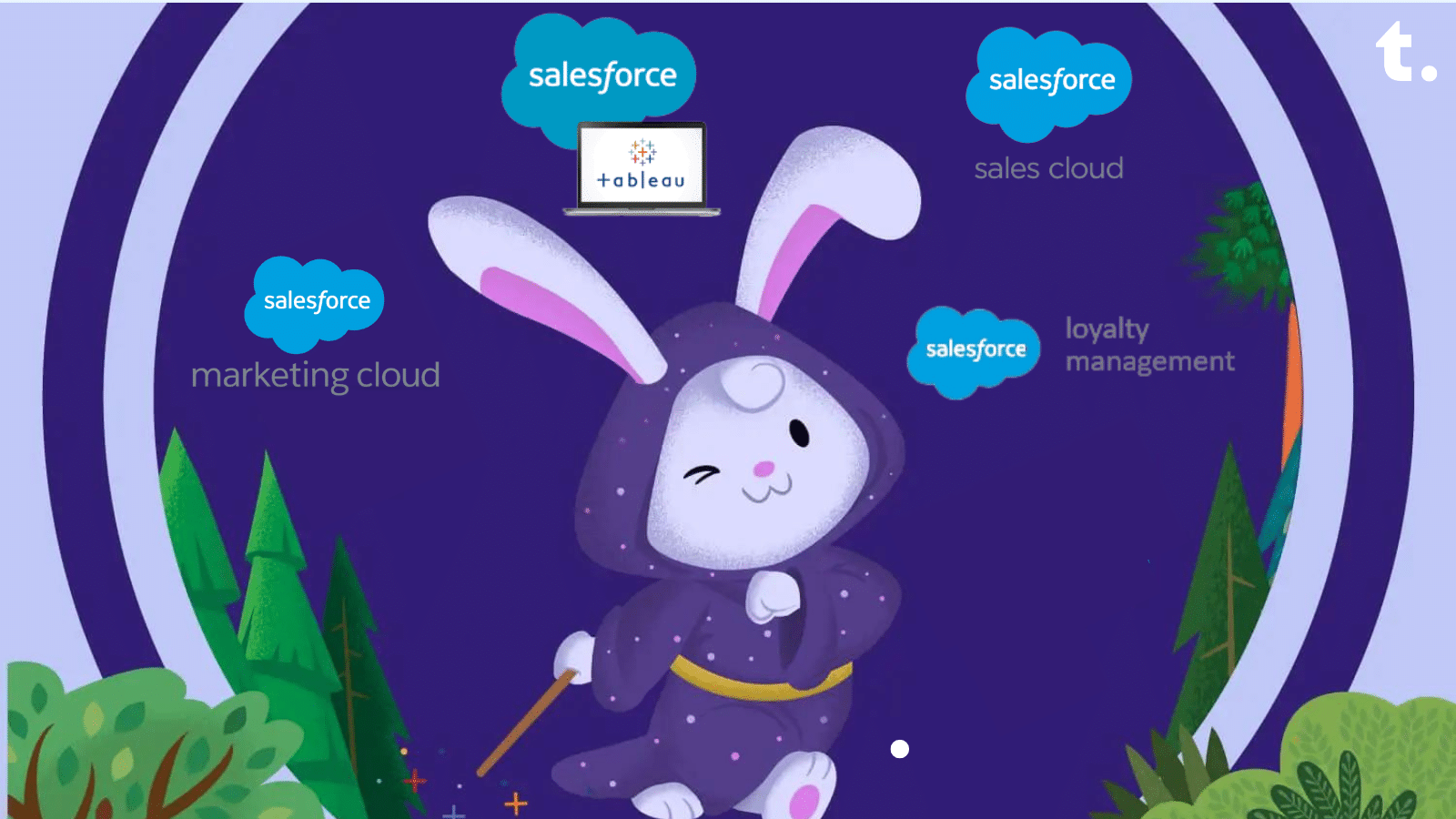In our recent blogs, we’ve explored the topic of retail media in quite a lot of detail – from the rising popularity of retail media networks (RMNs), right up to a step-by-step guide to building a seamless customer journey for your RMN customers. Now, if you know Trigg Digital well enough to know that we are big Salesforce nerds, you might be asking yourself, “Where does Salesforce fit into all of this?”
When it comes to RMNs, Salesforce can help in many ways. Firstly, it allows users to intelligently capture customer data (where the ‘customer’ in question is the end consumer) in a way that’s as efficient as possible, helping retailers build a complete 360-degree view of every potential consumer by combining data from disparate sources (from in-store data and customer survey results to their web browsing activity and even data from IoT-connected wearable devices) for advertisers to segment and target, to increase return on ad spend (ROAS). Secondly, Salesforce helps retailers to manage their customer journey (in this case, where the ‘customer’ is the advertiser).
Intelligently Capture Real Time Consumer Data
It’s estimated that this year alone, consumers will produce and consume around 94 zettabytes (94 trillion gigabytes) of data. But data isn’t just being generated. In a world of loyalty programmes and online shopping, retailers are collecting more of their customers’ data than ever before. Retailers have an array of options for collecting data online, from surveys and cookies (although these will disappear soon – you can find out more about that in our blog on the retail media playbook) to keeping track of how long consumers spend on their websites and where exactly they click. Today’s retailers need to be able to engage with their consumers to drive loyalty and increase profits, and to do that, they need to have a well-rounded view of them, their needs and their intent, across all of their digital footprints. With a single source of truth that gathers consumer data and displays it all in one place, retailers are better equipped to deliver a seamless connected experience that shoppers can trust.
Not only does Salesforce unite all of your teams – marketing, sales, commerce, store, service and IT – on one connected CRM platform. We are able to establish a single source of consumer truth, ‘Customer 360,’ within Salesforce – that’s what we call powerful! .
How, you ask? Through Marketing Cloud’s Advertising Studio, you can enhance your customer acquisition strategies and build lookalike audiences to widen reach and target ideal customers. Meanwhile, Sales Cloud and Service Cloud are utilised to build, manage and support both consumer and advertiser relationships, adding more layers of data and more touchpoints to that all important customer profile. And, with Loyalty Management, retailers collect and manage data on their loyalty schemes – helping to retain and increase the basket size of consumers by offering them a highly relevant, timely and personalised experience.
However, one of Salesforce’s newest (and most innovative) tools is Salesforce Genie. Genie is a next generation CDP, or ‘Customer Data Platform’, which enables integration with a wide range of out-of-the-box connectors for any app, device or real-time stream. Launched earlier this year, Genie is updated in real time, so brands can meet their customers’ needs with an unprecedented level of accuracy and efficiency. AI tools and the ability to automate workflows allow you to adapt to your customers’ issues and personalise every single step of their journey with you.
Seamlessly Connect the Advertiser Journey
On the B2B side, retailers need to be able to offer advertisers a seamless experience of their own. Not only are advertisers looking for a rich source of connected data on their target consumers, they also want a high return on ad spend (ROAS) and a simple process to achieve it.

Almost every step of the retailer to advertiser journey can be made easier with Salesforce, thanks to integrations with third party applications such as Google Ad Manager, Kevel, Criteo, and Moat. All of these, as well as billing or enterprise resource planning (ERP) tools like SAP, enable retailers to deliver their campaigns quickly, and reduce operational overheads on manual ‘people heavy’ processes.
When it comes to Salesforce, running, analysing and improving multi-channel campaigns via Marketing Cloud enables retailers to find their ideal advertising customers, acquire them, and then retain them.
Meanwhile, Sales Cloud allows sales and ad operations teams to onboard new advertisers, log sales activity quickly, and view the data collected through our aforementioned marketing campaigns. Sales Cloud can also help throughout the customer journey – you can manage and monitor your pipeline, and get real-time visibility of your forecast revenue. When it comes to signing contracts with new customers, Salesforce is compatible with a range of Document Management tools, including Documill, DocuSign, and Adobe Acrobat Sign – allowing people to generate and sign documents securely from wherever they might be, using any device, so sales teams don’t have to wait around for that all-important signature.
Using Advertising Studio, retailers help advertisers to identify lookalike audiences across multiple sources – including emails, SMS messages, Facebook, Google, Instagram, and Twitter – to acquire new consumers that have an interest in their product. Retailers can also run and orchestrate ad campaigns on behalf of their advertisers with Advertising Studio – helping to achieve a range of advertising goals from awareness to lead generation and conversions. Trends and insights using tools like CRM Analytics, Tableau, and Marketing Cloud Intelligence help advertisers and ad ops teams within the retailer to refine and optimise campaigns for performance, to maximise ROAS.
Many advertisers are looking for more control over their ad spend, and are turning to self-service options (think Google, LinkedIn and Meta Ads) rather than managed services to book their campaigns directly. According to a recent survey, 52% of buyers reported they were planning to increase their self-service spend earlier this year, with only 17% planning to spend more on managed services. More companies are making it easier for other firms to advertise with them – earlier this year, for example, the podcast company Acast launched its own self-serve advertising platform. The Salesforce tool Experience Cloud powers advertisers with self-serve capabilities to book, manage, optimise and report on campaigns from anywhere, any time. A true win-win, as the retailer is able to reduce cost by refocusing sales and operational efforts accordingly.
By leveraging consumer data, advertisers are able to tailor websites to each individual consumer, offering them a more personalised experience that will increase stickiness and lifetime value. With more personalised campaigns, advertisers can give consumers the ability to find answers themselves – both on their own terms and within their own time frame. With responsive websites and portals, they can let their customers do everything from access articles and update their accounts, and create and manage their own cases and claims.
The Future Of RMNs, Powered By Salesforce Genie
The retail media landscape has evolved significantly over the past few years, but with the recently-launched Salesforce Genie, it could be transformed into an advertising utopia!
If those collecting first-party data were to share said data (by some miracle of marketing altruism), advertisers would have access to all the data they could ever need – not just their consumers’ demographics and shopping history, but their use of IoT-connected devices like toothbrushes and doorbells, and even the conversations they have with their phones and smart speakers. If all of this data was made openly available, not only would advertisers be able to see it, but they’d be able to act on it in real time. It might sound like science fiction, but could all be possible with Salesforce Genie, and we are heading in this direction with the many audience extension apps already available on the AppExchange today. Some firms are already aggregating and sharing their data in data clean rooms – content providers upload user data and it’s both encrypted and anonymised, with all personally identifiable information removed. Only approved advertisers and other partners are granted access to this data, which can be used for analytics or real-time campaigns.
In the future, though, things could change even more. Take, for example, a shopper who hasn’t bought a new pair of gloves for the past couple of years. They might not have needed any or their old gloves might have been fine for now. However, imagine the area they live in is going through a cold spell, and since their car recently broke down, they’re walking outside a lot more. For a retailer that specialises in warm gloves – and has access to all of the above information on this potential customer – this is a golden opportunity. They could launch a marketing campaign targeting that specific person, using social media, email, SMS, WhatsApp and OOH ads and maybe even personalise the advertisements with their name. Advertisers would also be able to showcase gloves that match the customer’s personal style and could go so far as to use geo-tracking to advertise deals at shops they might be passing by. Many advertisers would be able to use this same data in multiple ways, launching campaigns for scarfs, jackets, or boots, for example, as well as anything else the customer might need. Machine learning and automation could also notify the brand’s advertising team when a golden opportunity like this arises, allowing them to sit back and wait for their ideal consumers to come to them.
That exact future may be a little further down the line, but it’s not inconceivable. Earlier this year, Boots and Tesco announced they’d signed a deal to share data gathered through their own loyalty card schemes, in order to better target consumers. Whether others follow in their footsteps remains to be seen, but it’s certainly a sign that retailers are willing to team up to make their advertising more relevant, more personalised, and more efficient.
—
Interested in hearing more about how Salesforce can help your organisation to make the most of your data? Or maybe you’re looking for a seamless customer journey like the one highlighted in the illustration above?
At Trigg Digital, we specialise in increasing productivity and efficiency throughout your business processes – from data collection right up to analysis, reporting and invoicing. AND we’re currently offering free architectural reviews, so you can find out exactly how we can streamline your process before we make any changes (and before you pay us any money!).
To find out more or sign up for a free review, drop our sales extraordinaire, Ricky Webber, a message at ricky@triggdigital.com or give us a call on +44 203 239 8492.
- Documill and Trigg announce strategic partnership to simplify the complexity of document management - February 13, 2025
- #TriggThoughtLeaders – Retail Media Deep Dive with Chris Quinn, Co-founder, ProOps Consulting - February 4, 2025
- Agents vs Traditional Chatbots : The Great Christmas Debate 🎅🎄 - December 23, 2024



